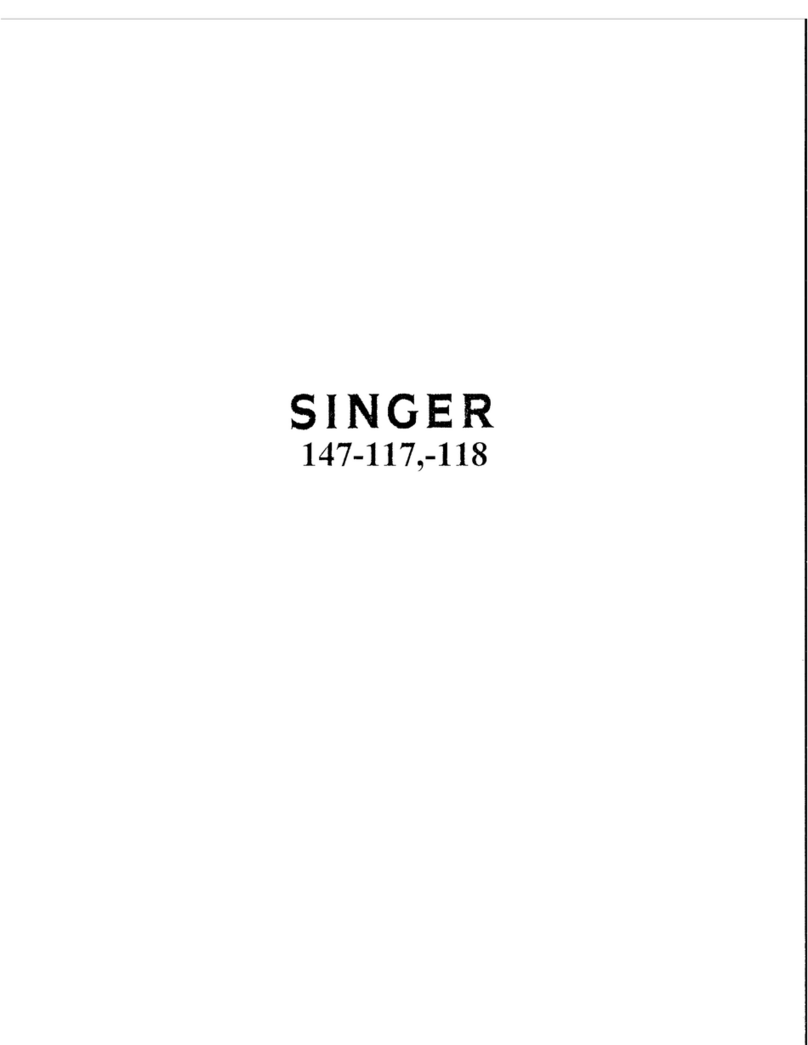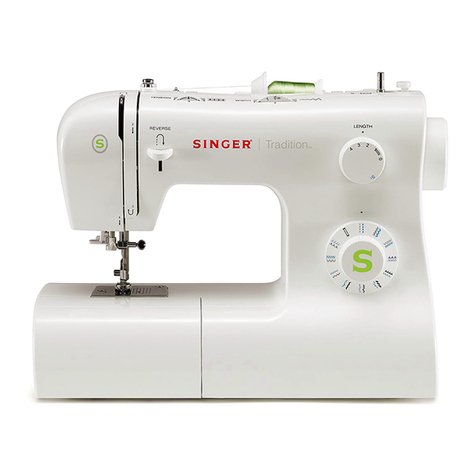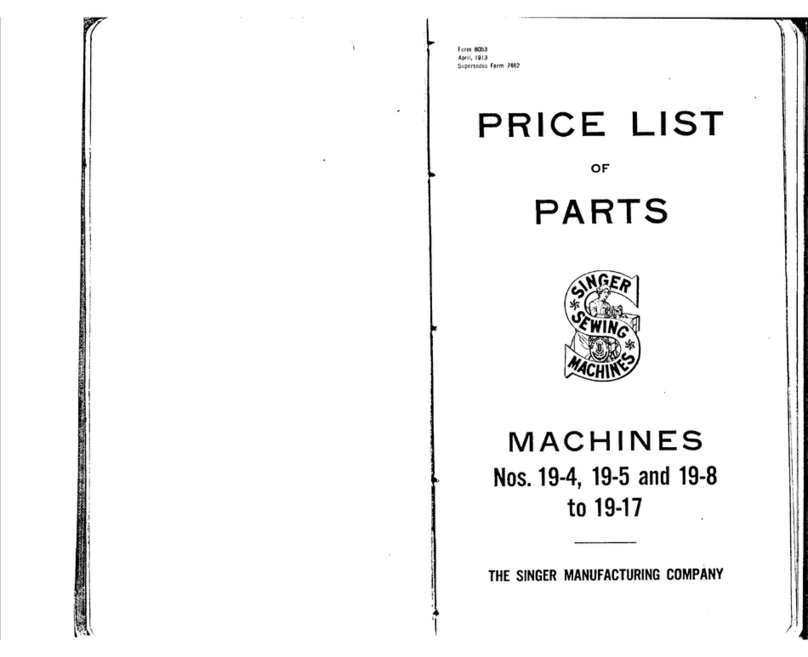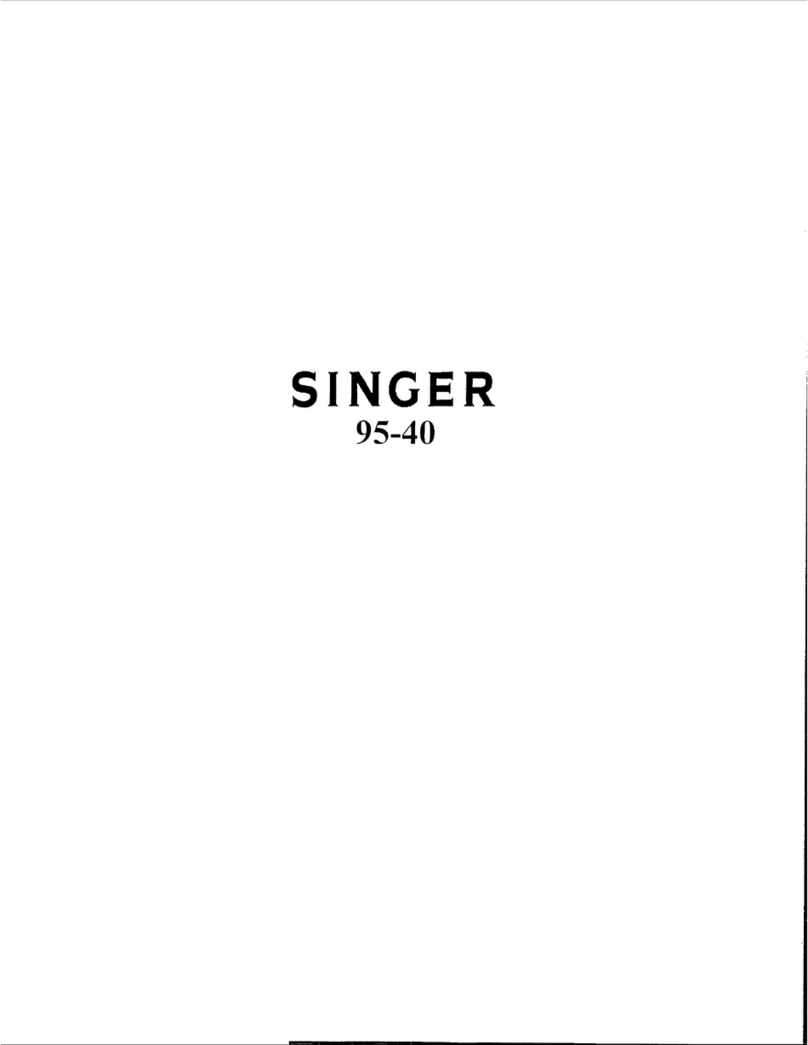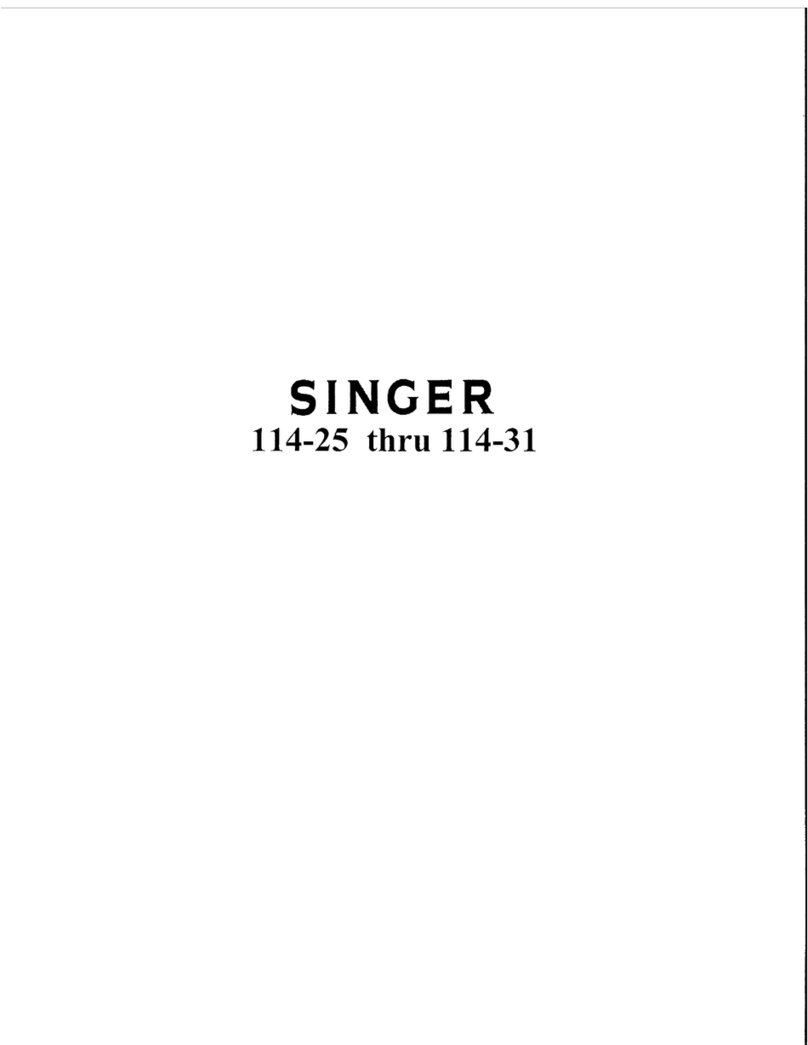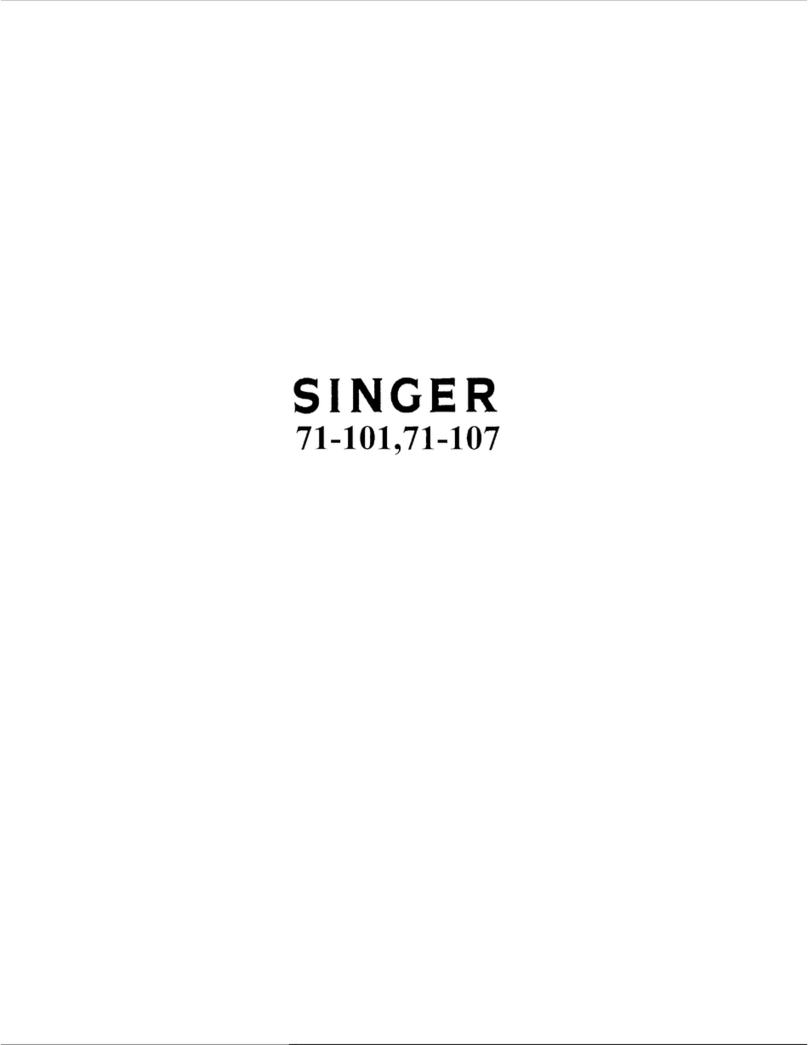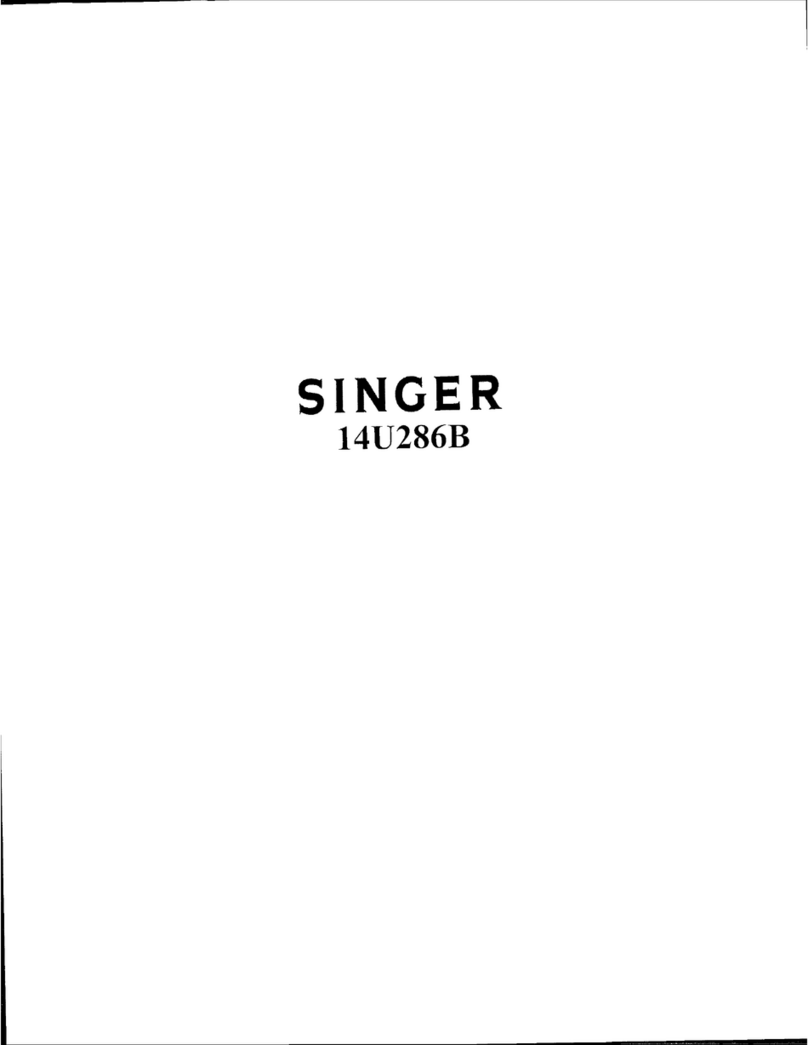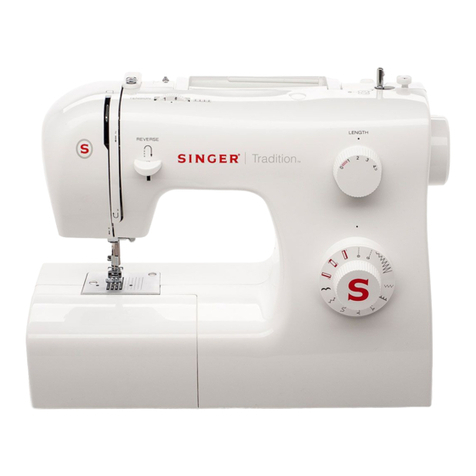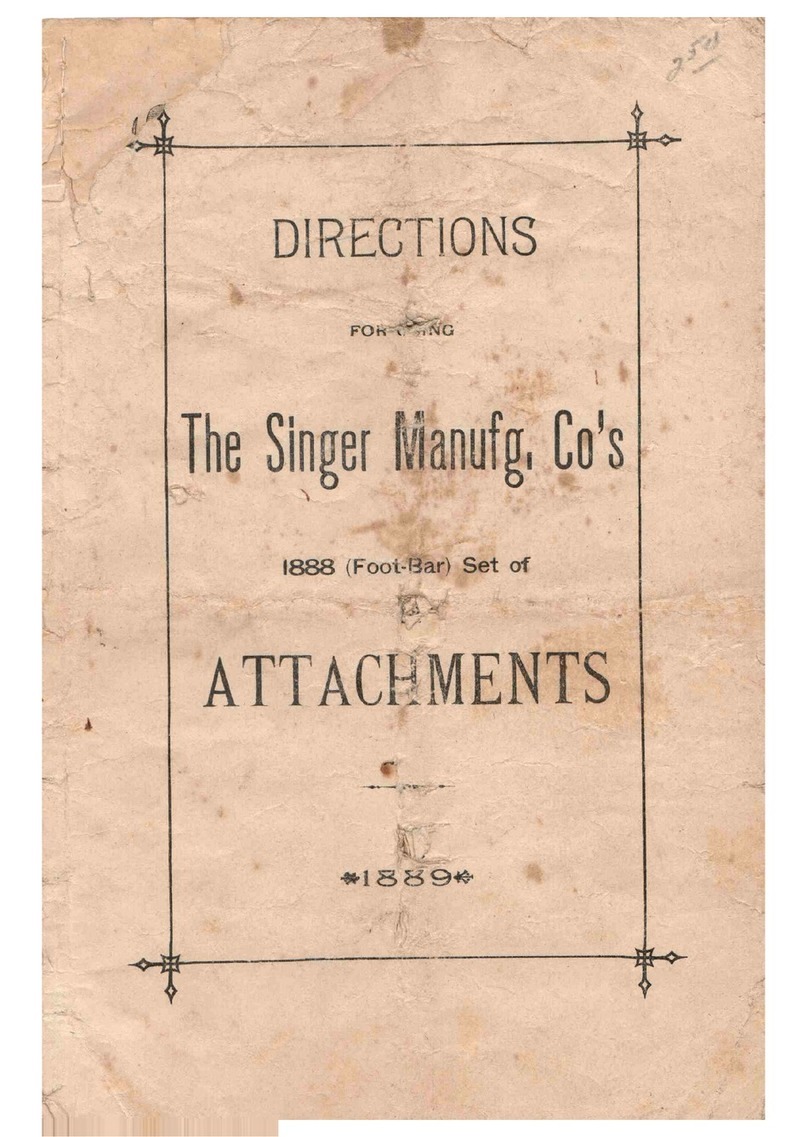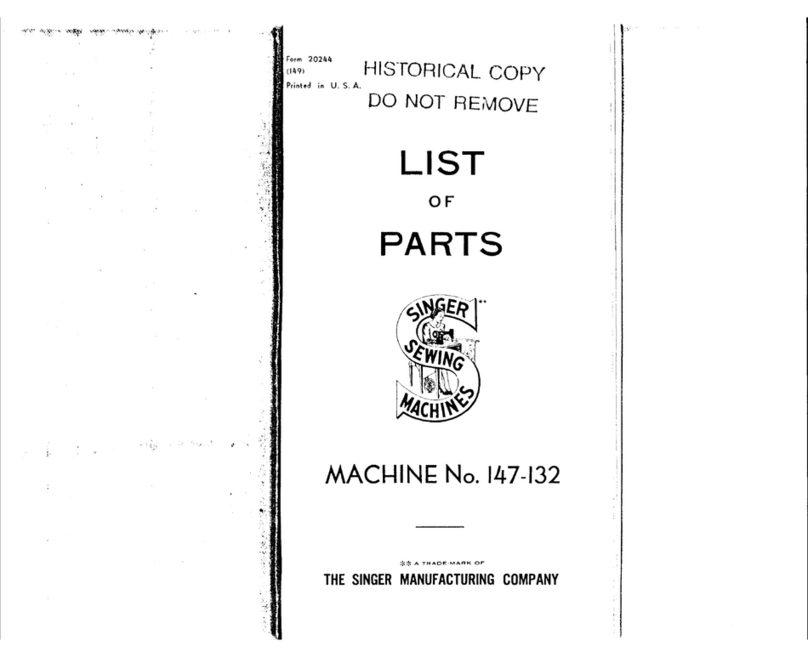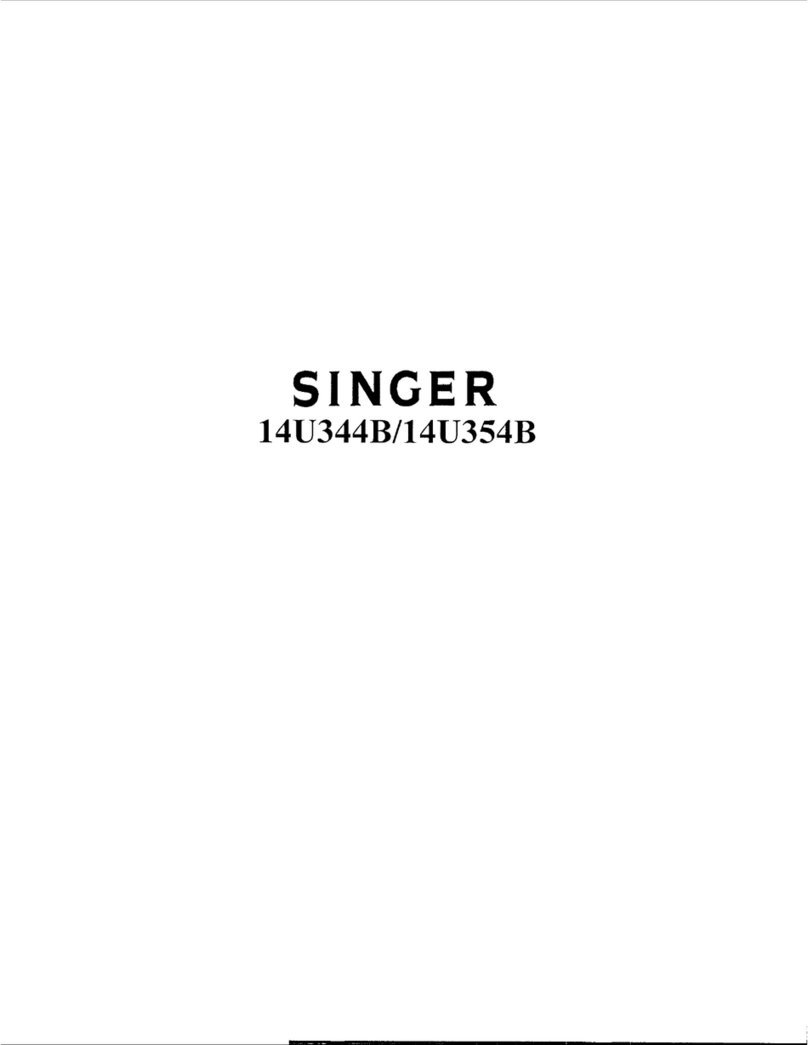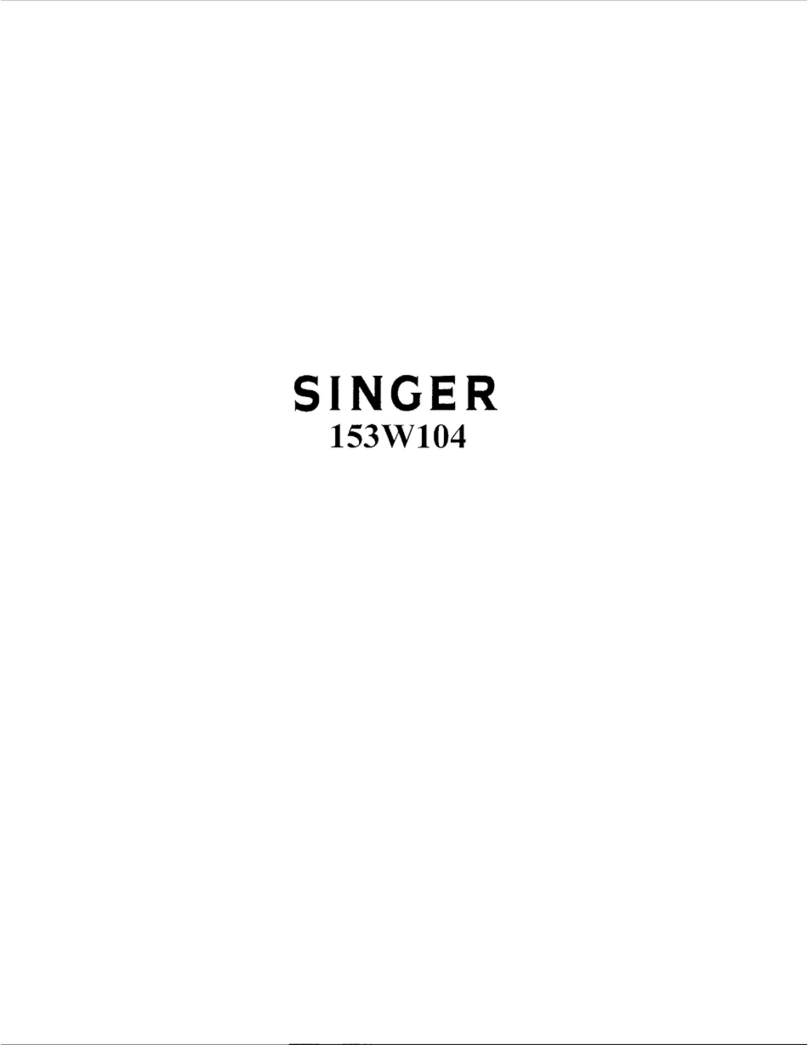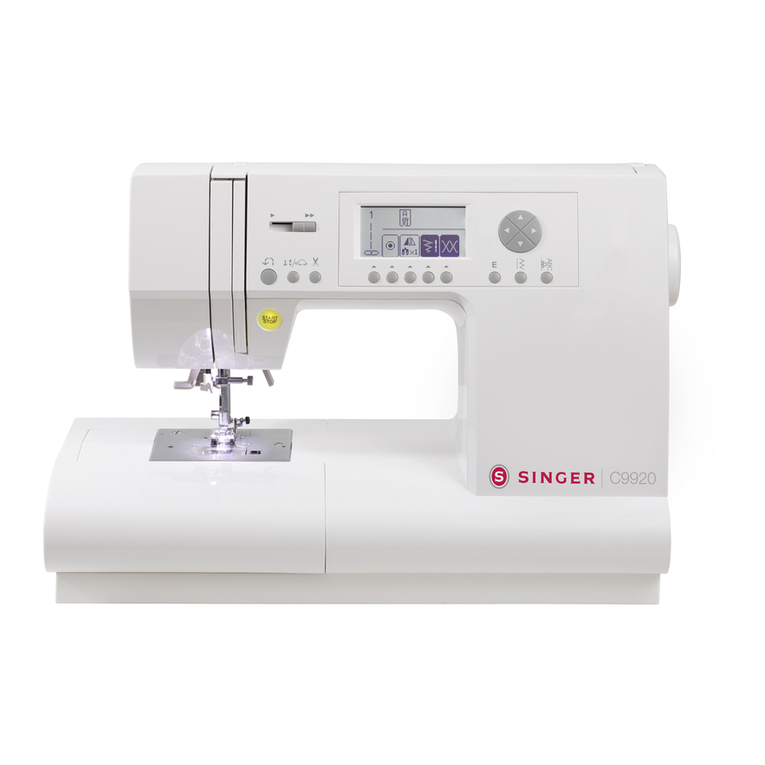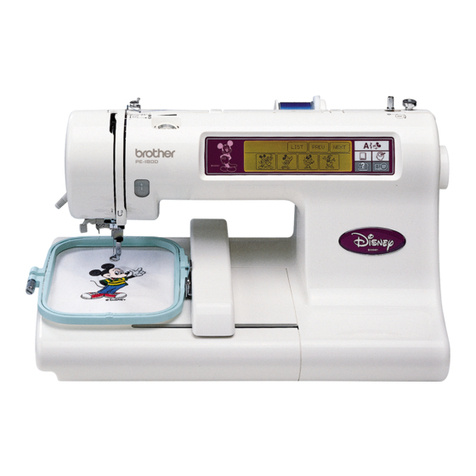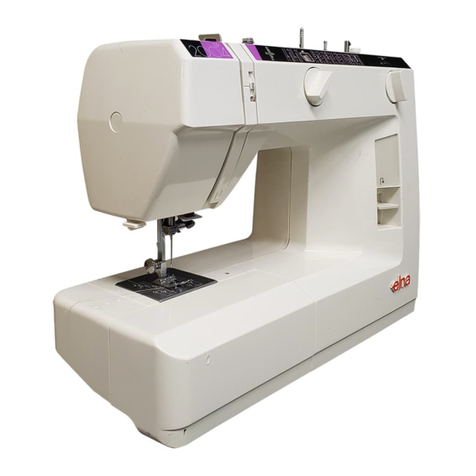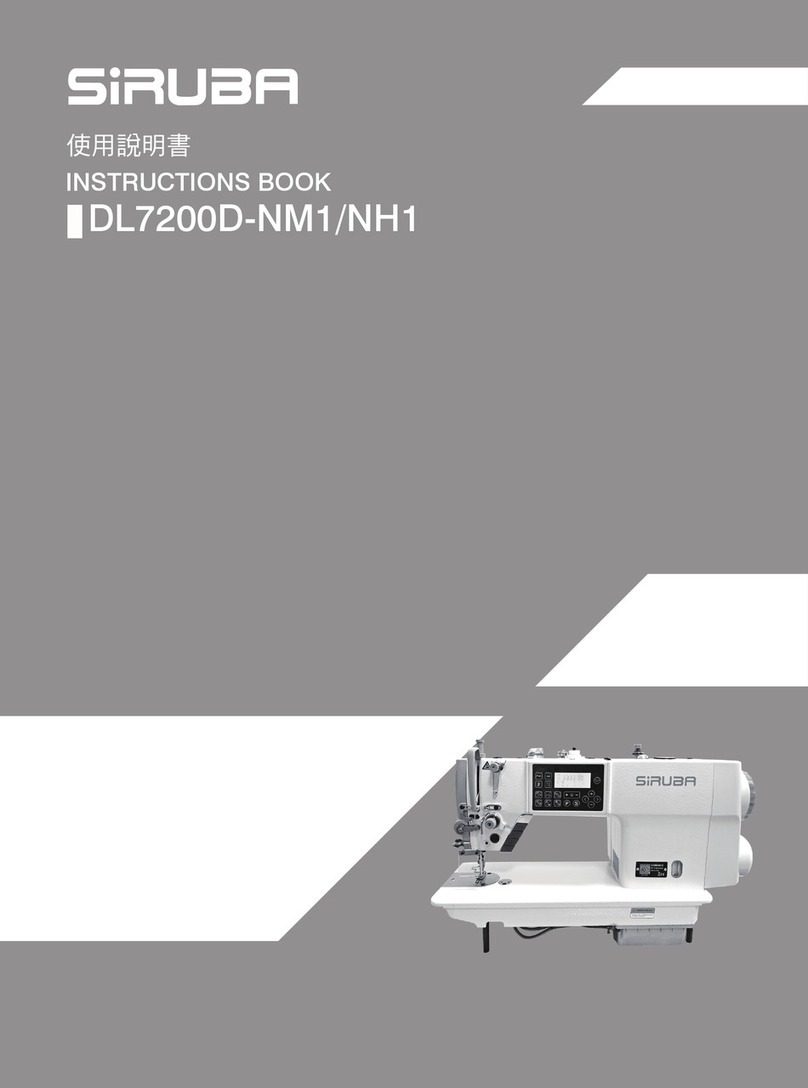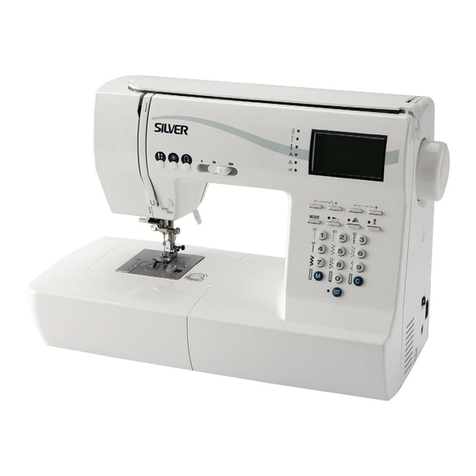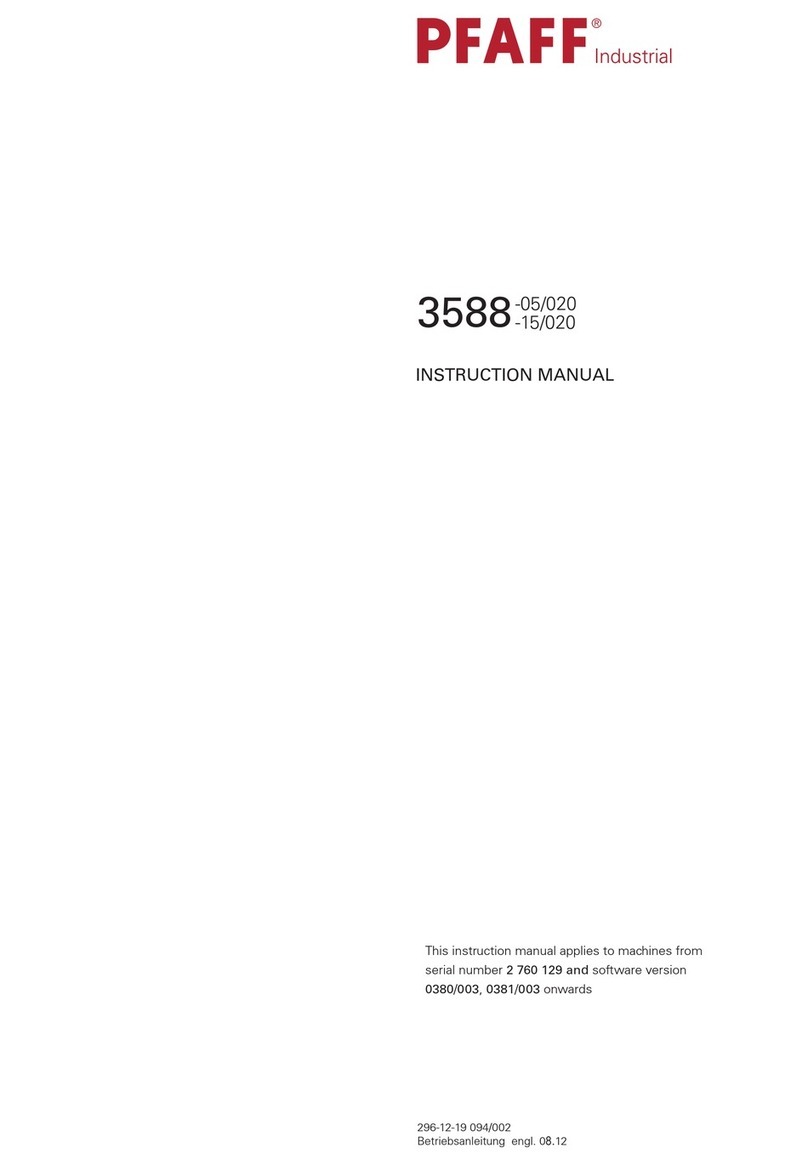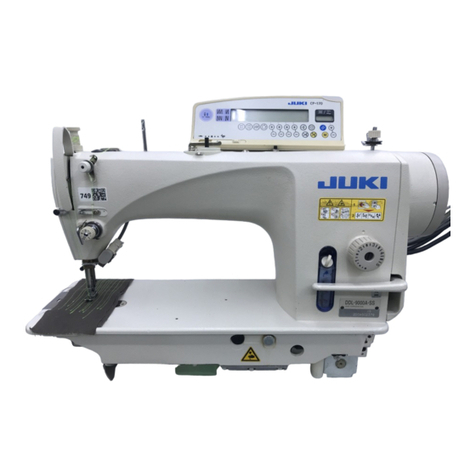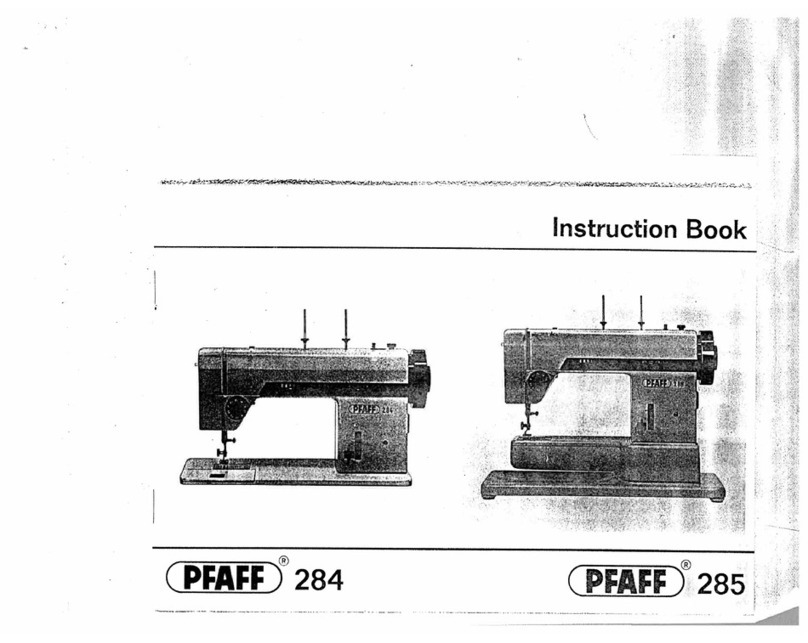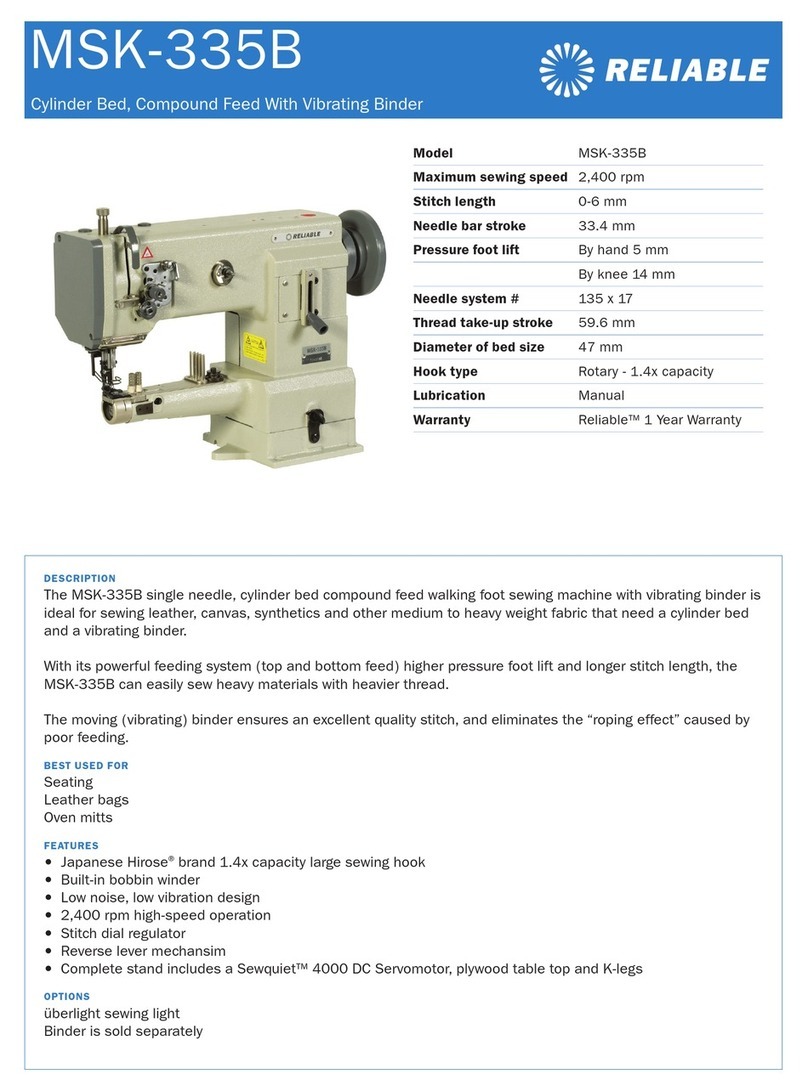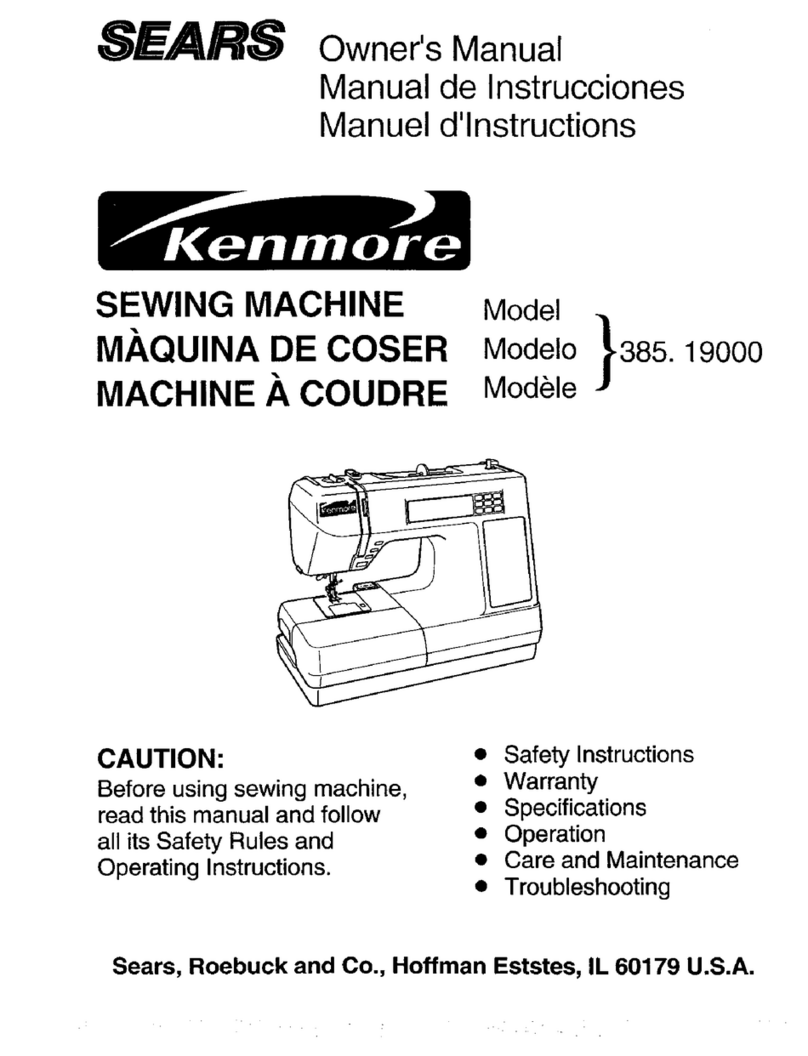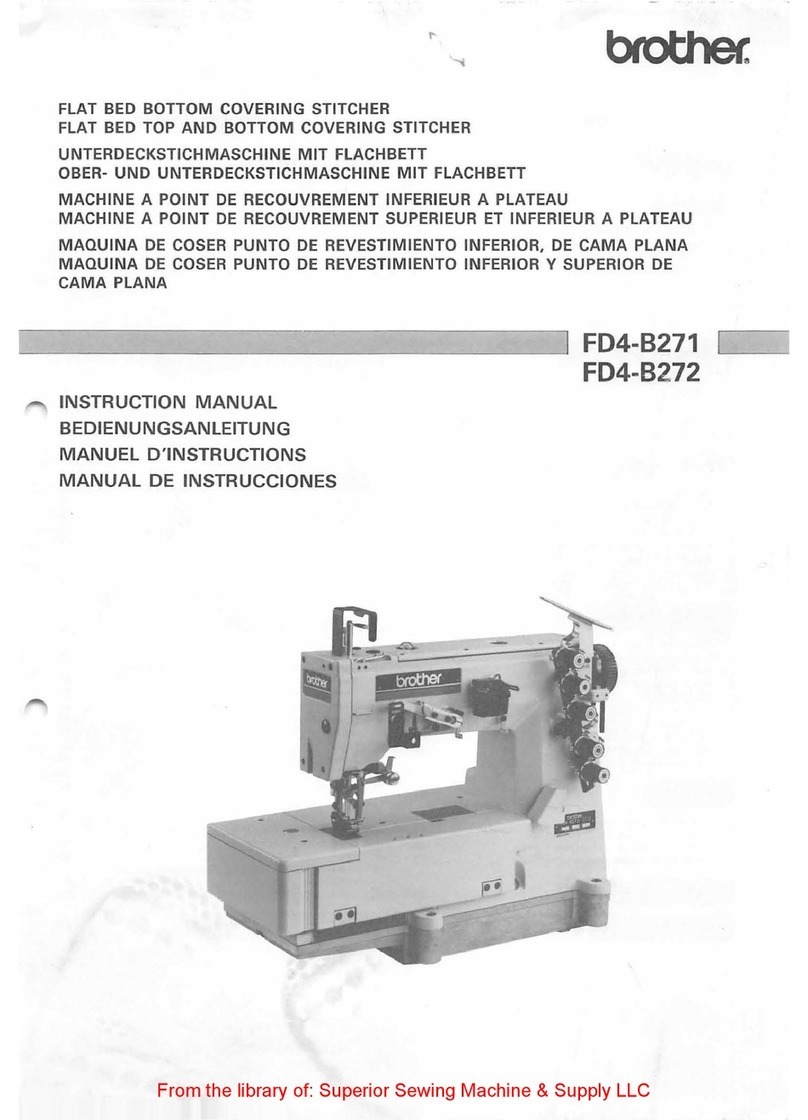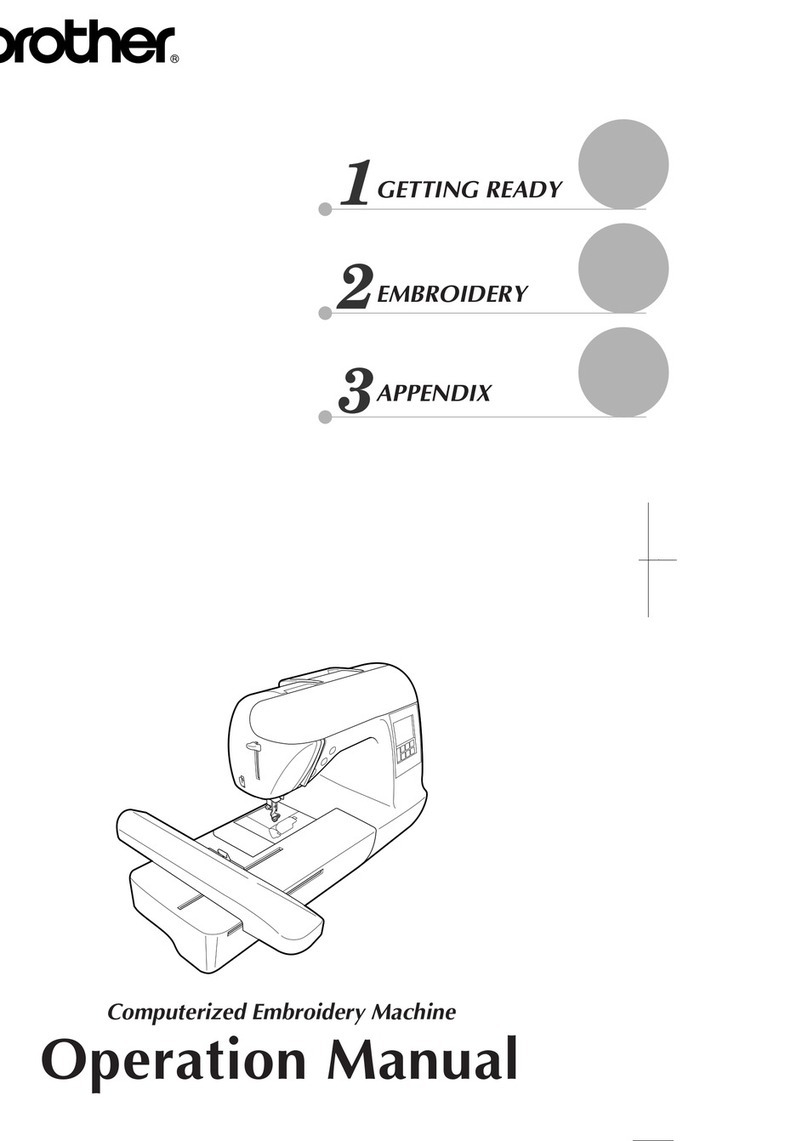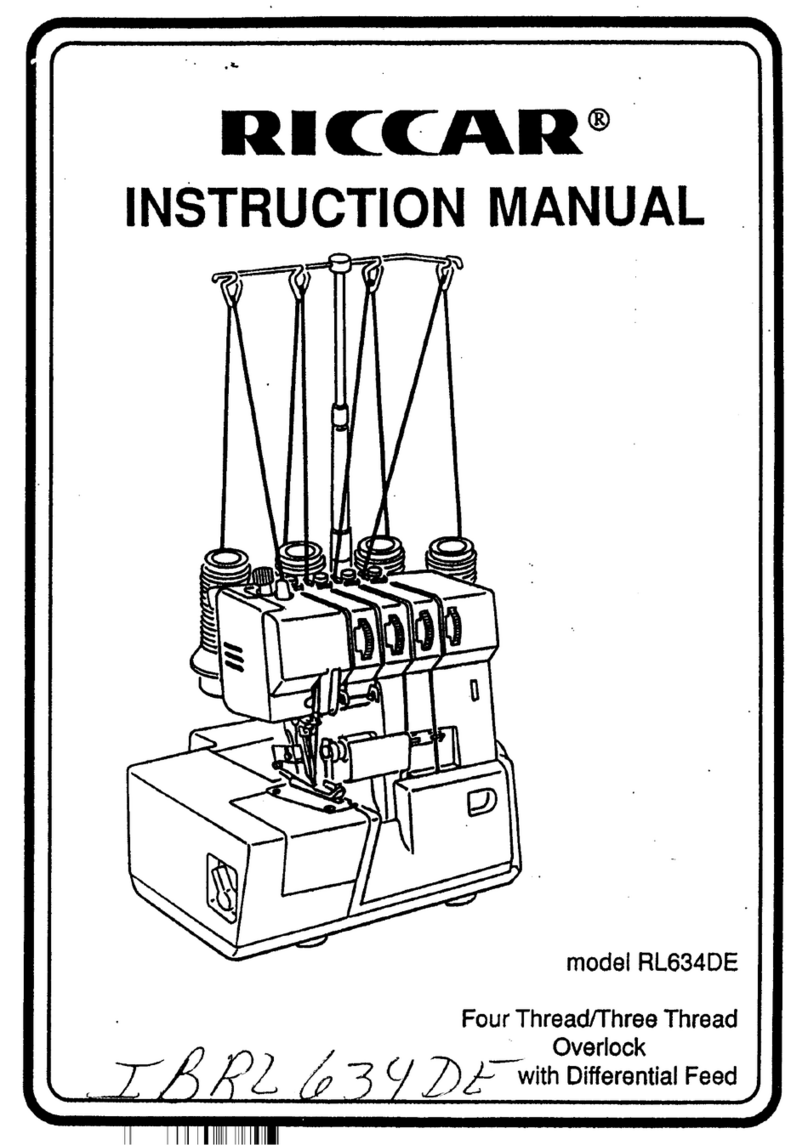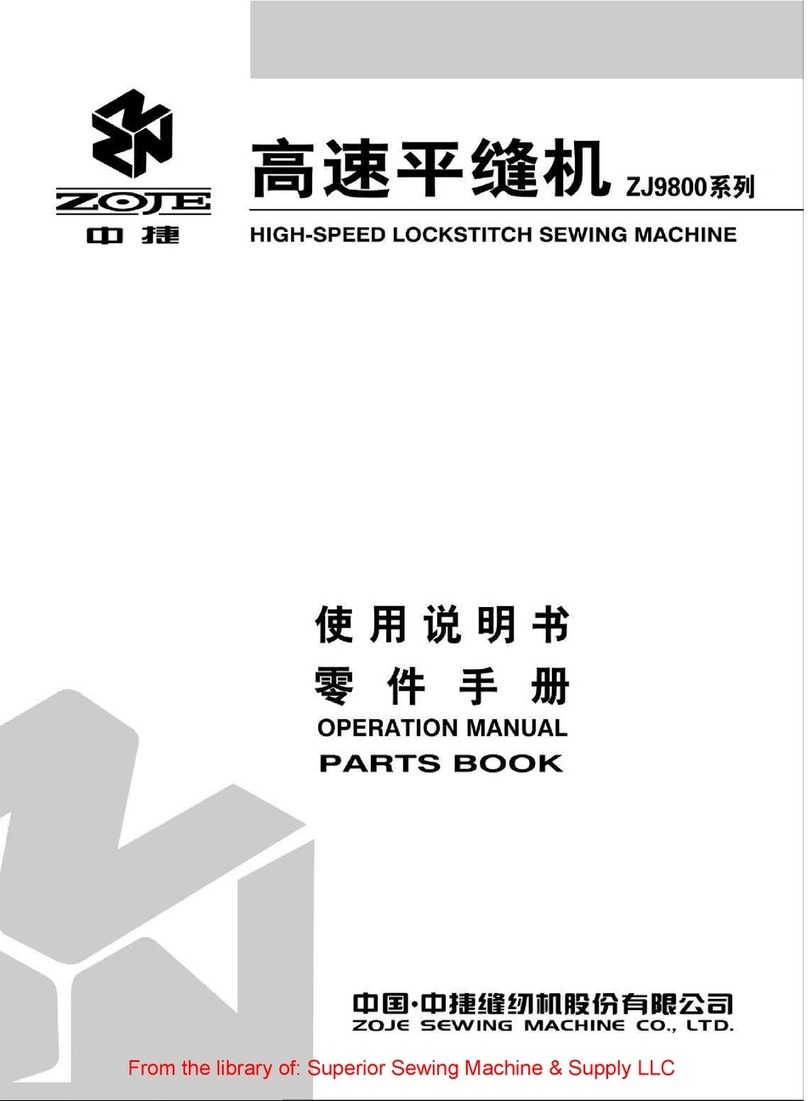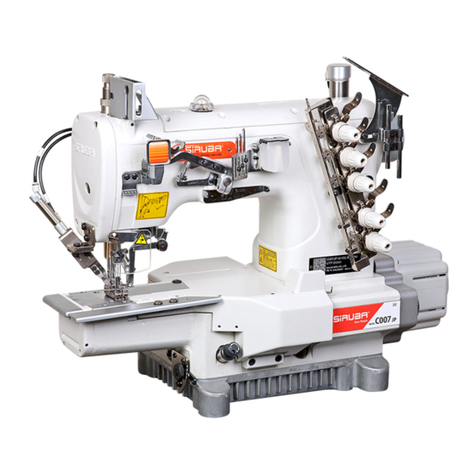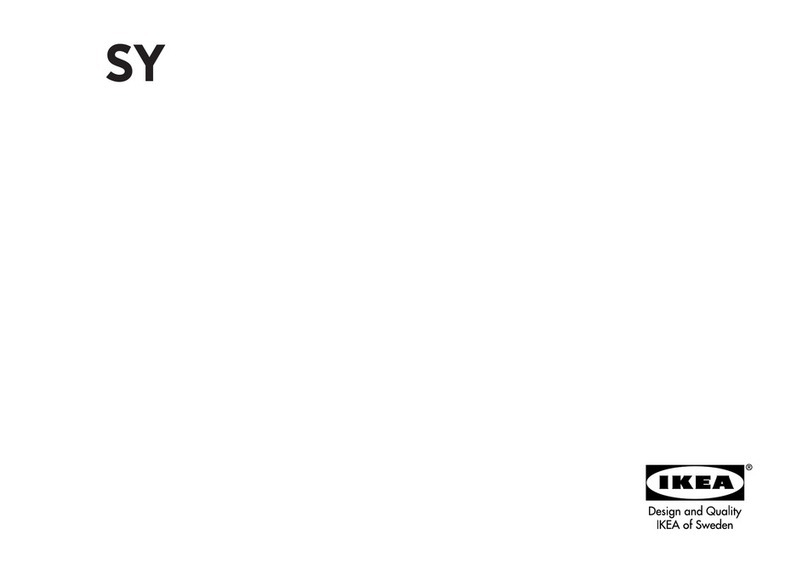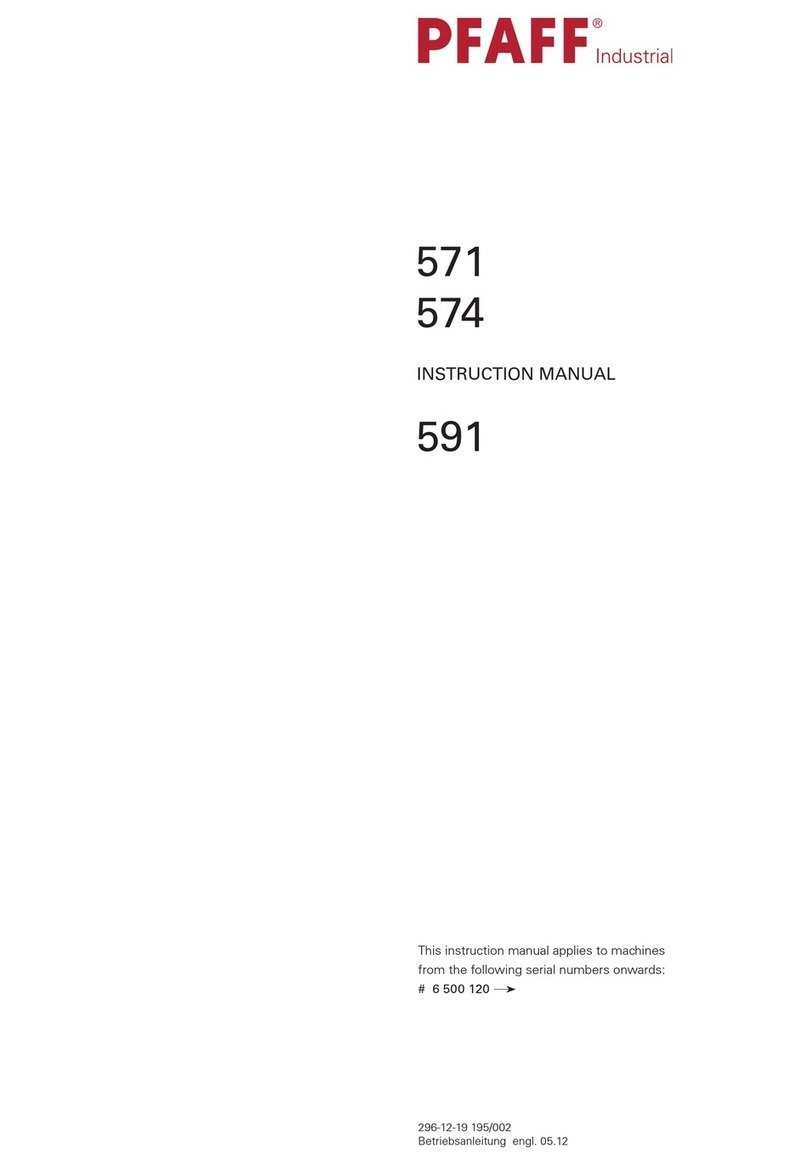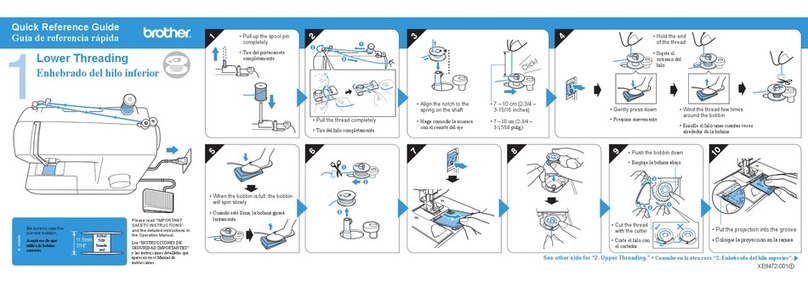thread guide Fig. 12, which
Is
mounted on the arm
cover.
From
there, pass the thread through the three
(3)
holes of the thread tensioner guide "Q". Starting
with
the top hole,thread
from
rightto
left,
from
leftto
right through the middle hole, and
from
right to left
through the bottom hole. Pass the thread over
and
bet
ween the tension discs "R", from right to left, and wind
it under and around thread controller "S" from right
to left. It is placed under the controller spring "T" and
over the controller projection so that the controller
spring holds the thread down.
Pull
the thread through
the
thread
guide
"U"
and
then
from
right
to
left
through
the eye of the thread take-up "V". Pass it bock again
through the thread guide "U", lead it behind the oil
felt pad "W" and then draw the thread through the
thread guide "X", and from left to right through the
eye of the needle.
PREPARATION
FOR
SEWING
Hold
the
end
of
the
needle
thread
loose
in
the
left
hand.
Turn
the machine pulley towards you
until
the
needle has made one full
stitch
and is bock to its highest
point. By pulling the needle thread, the bobbin thread
will
come through the hole in the feed dog.
Lay
both
threads underneath the presser feet and close the bed
slide completely. Now the machine is ready for having
the material placed under the presser feet.
ADJUSTMENT
OF
THREAD
LUBRICATION
(Figure 13)
The
oil
reservoir
for
thread
lubrication
can
be
filled
through hole "Y", Fig. 13, in the face plate. The amount
of oil going to the oil felt
pad
can be adjusted by nut
"Z";
for more oil, turn counter-clockwise; for less oil.
AA
Figure 13
turn
clockwise.
The
oil
flow
can
be
turned
on
and
off
with the plunger release lever "AA", The oil
flows
when
the lever is in the horizontal position; there is no flow
when it is in the vertical position.
For thread lubrication always use Singer Thread
Lubricant, Type "E".
TENSION
CONTROL
(Figures 11, 13, 14, 15 and 16)
The tension of the needle thread
Is
regulated by
thumb nut "AB",
Fig.
13, and should only be changed
when the presser feet are down and the tension is not
released. Turning the nut clockwise increases
and
turn
ing it counter-clockwise
decreases
the tension.
The tension of the bobbin thread is regulated on the
bobbin case tension spring by means of the adjusting
screw "AC", Fig. 11. Turning it clockwise increases
and
turning it counter-clockwise
decreases
the tension.
Figure 14
With correctly adjusted tensions, the
needle
and
bobbin
threads
should
be
locked
in
the
center
of
the
material as shown in Figure 14.
Figure 15
If the tension on the needle thread is too tight, or if
that
on the bobbin
thread
is
too
loose, the
needle
thread
will
lie straight along the upper surface of the
material as shown in Figure 15.
<J~~
-o-
<y~
Figure 16
If the tension on the bobbin thread is too tight, or if
that
on the
needle
thread
is
too
loose, the bobbin
thread will lie straight along the underside of the mate
rial as shown In Figure 16.
ADJUSTMENT OF
STITCH
LENGTH
(Figure 13)
The stitch length can be adjusted only when the
machine
is
stopped.
Stitch
length,
in
number
of
stitches
per inch, can be read on the stitch length indicator of
the
machine
pulley.
To
changethe
stitch
length,depress
the button "AD", Fig. 13,
and
turn the machine pulley
until the button
engages
(clicks)
with the adjustable
feed drive eccentric. Continue turning until the desired
number
of
stitches
per
inch
appears
opposite
the
mark
on
the
machine arm. Then
release
the
button.
